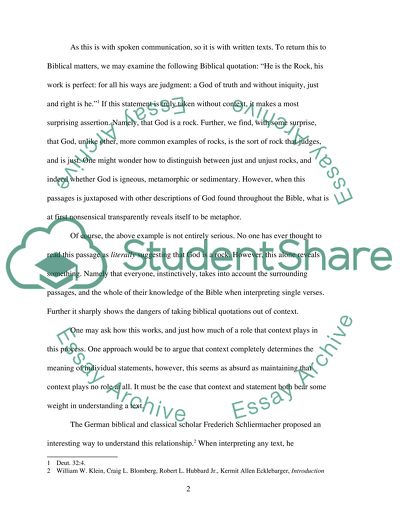Cite this document
(“The Role of Context in Biblical Hermeneutics Essay”, n.d.)
Retrieved from https://studentshare.org/religion-and-theology/1452438-the-role-of-context-in-biblical-hermeneutics
Retrieved from https://studentshare.org/religion-and-theology/1452438-the-role-of-context-in-biblical-hermeneutics
(The Role of Context in Biblical Hermeneutics Essay)
https://studentshare.org/religion-and-theology/1452438-the-role-of-context-in-biblical-hermeneutics.
https://studentshare.org/religion-and-theology/1452438-the-role-of-context-in-biblical-hermeneutics.
“The Role of Context in Biblical Hermeneutics Essay”, n.d. https://studentshare.org/religion-and-theology/1452438-the-role-of-context-in-biblical-hermeneutics.


